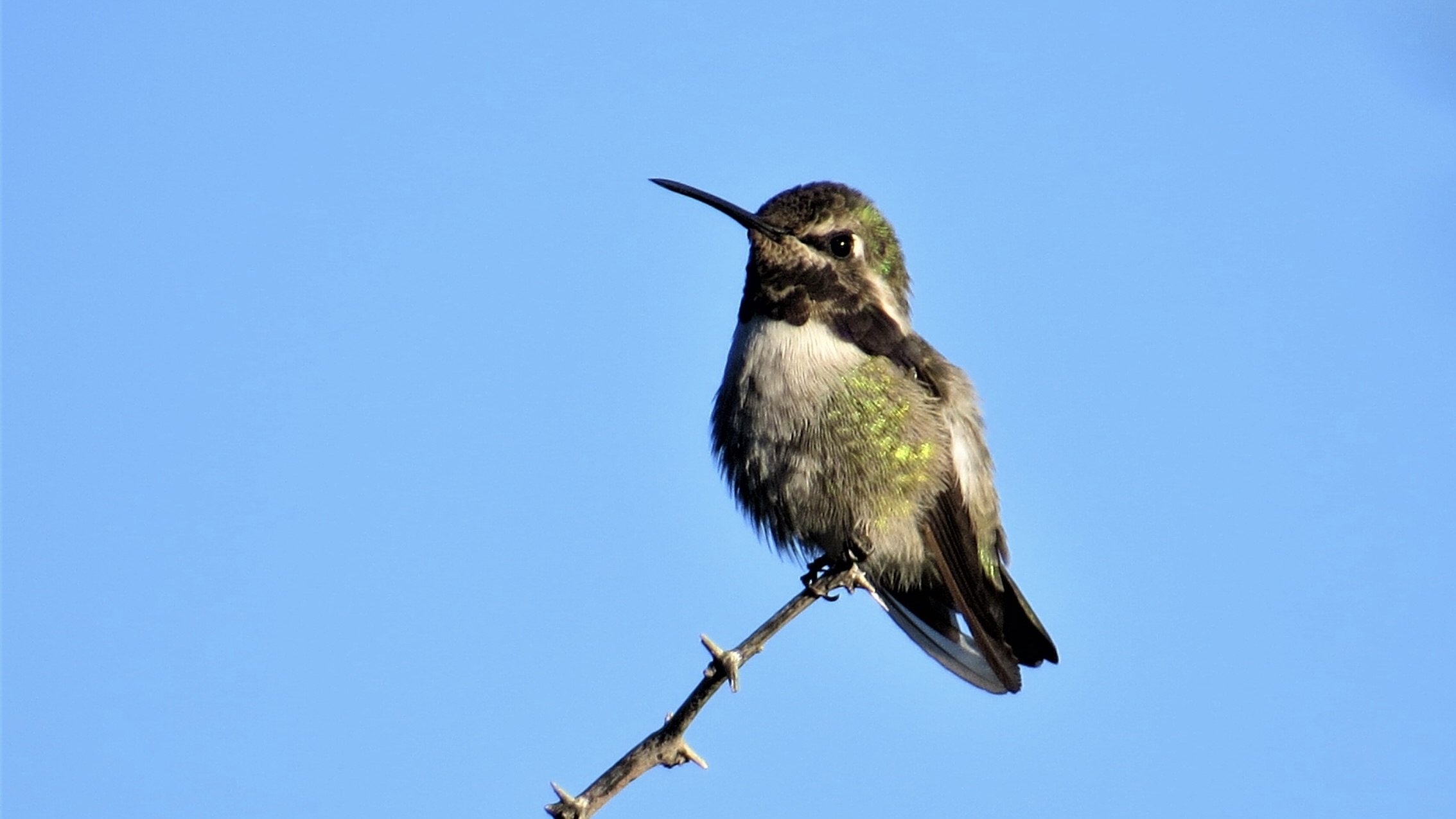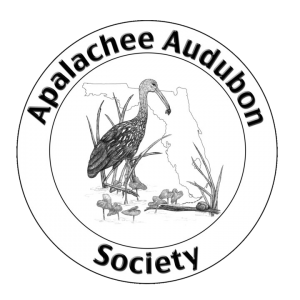June signals the end of our chapter’s program year, and it goes without saying that this was not the year we were expecting at the start of our year last July. We planned to resume in person meetings last fall, but the emergence of two pandemic variants changed that and kept our programs on Zoom for the rest of the year. My thanks to the program committee—Norma Skaggs, Donna Legare, and Dara Miles-Wilson—for putting together a terrific set of programs. Dara was responsible for setting up our Zoom presence so we could have programs when we couldn’t meet in person, for which we are deeply grateful. It was wonderful to keep our programs going, and we hope to continue our streaming programs even after we resume meeting in person. By the way, these program were all recorded and you can watch them on our YouTube channel.
Thankfully, infection rates were low enough by April that we were able to host two special programs, Among Penguins and Birding without Borders, with internationally known Bird Man Noah Strycker—IN PERSON, for the first time in two years! During his 2015 World Big Year, he was the first person to see more than half the world’s 10,000 species of birds—6, 042 to be precise—in one year. These programs were also live-streamed and recorded, so if you weren’t able to attend, visit the Apalachee Audubon YouTube channel to watch those as well as any of our other programs from this year.
Thankfully, we WERE able to keep our monthly field trips and birding socials going throughout the past year, and I want to thank Heather Levy for organizing and planning those. People were definitely ready to meet up in the out-of-doors. Heather also served on the board the past two years and organized our first (at least in recent history) chapter conservation grant program for local research and/or conservations projects. We’d planned to award one $500 grant this year, but another application was so deserving that we awarded two grants!
Our after school bird club at Pineview Elementary resumed in late January and our Education Committee volunteers have been visiting twice a month to engage the children in environmental and birdwatching activities. Read Donna Legare’s end of the year wrap up about how the children created bird nests for their final project. You can see photos of all the kid-built nests!
The chapter continues to be involved at Lake Elberta Park with trash clean-ups, invasive plant removal, and special projects. In December 2020, we had a bat house installed, we’ve set up nest boxes for Eastern Bluebirds and Wood Ducks, and every winter we set up a tree of gourds for Purple Martins nesting.
This year’s project was building and installing a chimney swift tower. Thank you to Jody Walthall for building the tower with assistance from Jim Carr and several Native Nurseries employees, and to Brian Bryson for his lovely artwork on the sides of the tower. Special thanks to Ann Morrow for writing the text and working with the interpretive sign company to create the sign, which we expect to be installed this fall. This was financed in part by a grant from the Aramark company (who also provided volunteers for a trash cleanup last October) and numerous other donors who are listed on our website blog. I encourage you to visit the park to see the tower for yourself, have a pleasant walk, and an excellent birding experience!
Thank you to the following:
Elizabeth Georges: Our chapter webmaster, who designed and developed our current website, and continues to maintain it, a critical role in today’s world of online communications.
Chris Grossman: For the past several years, Chris has been editing, assembling, and sending out The Limpkin Times e-newsletter, our primary communications with our chapter members and friends.
Tammy Brown: She has been organizing our February Wildlife-friendly Yards Tour and fundraiser for many years now. After a year off due to the pandemic, this year’s event set a record for attendance, with 250 people purchasing tickets!
Cierra Nelson: a CLI student (Conservation Leadership Initiative program developed by Audubon Florida) mentored by Dara Miles-Wilson. Cierra was also our chapter intern from Florida A & M University and worked AAS member Donna Legare, conservation educator Patty Brown and camp director Meghann Dawkins to design and implement a bluebird trail at the Joe Budd Youth Conservation Center in Midway. She arranged for members of the FAMU Outdoor Club to build eight nest boxes in November that are now set up along a bluebird trail. Read Cierra’s account of her experience with Apalachee Audubon.
Treasurer, Harvey Goldman: A LONG time member of Apalachee Audubon. As chapter treasurer, he has kept our chapter finances and business matters on a solid footing since 1996. He and his wife Judy have organized our Coastal Clean-up for many years, and have volunteered many hours of sweat equity over the years at our annual banquets, birdathons, and anything requiring extra sets of hands.
Secretary, Nelson Ball: Board member the past two years and an officer this past year. Nelson started with the chapter in 2019 as an intern and a CLI student (Conservation Leadership Initiative program developed by Audubon Florida) mentored by Donna Legare. He’s been active with our projects at Lake Elberta, including a writing up a study of the source of trash that ends up in the lake.
Board Directors
Tallulah Biletzskov: They started with the chapter in 2020 as a CLI student (Conservation Leadership Initiative program developed by Audubon Florida) mentored by Dara Miles-Wilson. Tallulah joined our board this past year, and while we’re sad that they won’t be able to complete the second year of their term, it’s for great purpose. As a recent FSU graduate, they are headed to a job in Sweden in June and we couldn’t be more thrilled for them! They also participated as a chapter representative in a program with Audubon Florida called FLEDJE: Future Leaders for Equity, Diversity, and Justice in the Environment and will advise the chapter as we move towards inclusivity. The chapter received a $1,000 grant because of this participation and will be applying it towards providing birding activities for a summer camp program this summer.
Caleb Crow: Caleb is completing his first year of board service and he’s been instrumental in grant writing this year, running Zoom programs, and now that outdoor events are resuming he and his family have been volunteering at tabling events this past spring.
Donne Legare: Former chapter President and a long time member of Audubon and our board, retiring this year. She’s also supervised our intern, Cierra Nelson, and helped her develop a new project when she was not able to help out at Pineview Elementary because of the pandemic. Many thanks also to her and Jody Walthall for providing overnight accommodations for Noah Strycker during his April visit.
Howard Kessler: Completing his 2nd term on the board, his experience and advice has been instrumental to the board this year. This year, Howard participated as a chapter representative in a program with Audubon Florida called FLEDJE: Future Leaders for Equity, Diversity, and Justice in the Environment and will advise the chapter as we move towards inclusivity. The chapter received a $1,000 grant because of this participation and will be applying it towards providing birding activities for a summer camp program this summer.
Peter Kleinhenz: Former chapter President and long-time board member. Peter was instrumental in launching our chapter’s involvement with Lake Elberta Park and launched our chapter’s e-newsletter, The Limpkin Times. He chaired the Conservation Committee this year and, through his job at Tall Timbers and with a grant from the Cornell Lab of Ornithology, he recruited a number of chapter volunteers to assist with training conservation easement landowners in using eBird. This was to give them the ability to identify and report birds on their property, providing more data for areas not available for birding by the public.
Norma Skaggs: Director and program chair. who is retiring from the board. She and the committee did a brilliant job with scheduling this year’s programs and she has also helped with tabling events this spring.
Rob Williams: Director and Conservation Committee member, who is active with our state regional conservation committee, monitoring state land purchases for Florida Forever, and recently consulted on behalf of the chapter with the City of Tallahassee and made a number of recommendations for environmental improvements for Debbie Lightsey Nature Park.






















